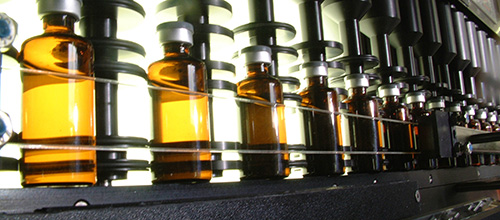Packaging of Solid Dosage Forms: Warning Letter in the USA
Recommendation

Fundamentals of Visual Inspection - Live Online Training
Due to numerous GMP deficiencies, a US company operating as a repacker of solid dosage forms received a Warning Letter from the FDA. The inspection had already taken place in November 2022. Since the FDA found the company's response to the Form 483 was insufficient, the Warning Letter followed now.
Deficiencies in the cleaning of production equipment
The FDA found fault with the cleaning procedures for equipment used to manufacture including blister machines, as inadequate. The manufacturer had itself noticed visually contaminated tablets and capsules on several times. Furthermore, there is a lack of studies confirming that no product or detergent residues remain on the cleaned manufacturing equipment after cleaning. According to the FDA, there is also a lack of hold time studies of cleaned equipment.
In its reply, the US manufacturer committed to a new cleaning validation. This is not sufficient for the FDA, because no cleaning validation protocol was submitted and the manufacturer did not provide any information on cleaning prior to the completion of the new validation - i.e. whether product and cleaning residues are sufficiently removed. There were also no acceptance criteria and no maximum time for storage of used/dirty equipment (prior to cleaning).
In addition, there is no information on possible risks that may be caused by product on the market as a result of inadequate cleaning.
Lack of handling of deviations / CAPA
The FDA criticises the handling of deviations, the determination of causes and the determination of CAPA measures.
The manufacturer is aware of several cases of broken tablets in the packaging process. The manufacturer treated these and similar deviations as single events and did not address the repeated occurrence. In an investigation signed by QA, it was stated that no further action was required without explaining this. It was noted that the tablets were tiny and could therefore not be handled appropriately by the equipment. There was no root cause investigation or action.
Deficiencies in validation and qualification
The FDA also criticises the validation of the packaging processes as well as the qualification of the packaging equipment.
No product-specific validation of the packaging processes was carried out and no processes and no acceptance criteria were defined in advance. In numerous cases, broken tablets occurred (see previous point). In addition, according to the FDA, the manufacturer failed to adequately qualify its packaging equipment. The validation protocol submitted lacked adequate, equipment/product-specific limits to show the performance of the equipment.
Risk of cross-contamination
According to the FDA, the facilty is not adequately designed to prevent cross-contamination. For example, beta-lactam drugs are packaged in the same facility as non-beta-lactam drugs. According to the FDA complete and comprehensive segregation of beta-lactam repackaging operations is due to the high patient risk of cross-contamination. Furthermore, according to the FDA, there is no safe level of beta-lactam contamination, that could be considered a tolerable risk.
In response, the manufacturer stated that a "break" in the containment of the beta-lactam packaging has never occurred. However, the manufacturer cannot provide any data on this, e.g. from environmental monitoring.
The FDA explains the situation in unusual detail in its Warning Letter:
The separation of beta-lactam and non-beta-lactam drugs almost always requires the use of separate buildings. In very few cases can two manufacturing areas be housed in the same building. In these rare cases, a continuous, solid, impermeable wall must completely seal off the two manufacturing areas completely from each other. These two separate areas are located within the same building structure, but with separate entrances, exits, infrastructures, ventilation systems and personnel, so that any interaction between air, personnel, materials or other factors is excluded. In these cases, a risk assessment would have to show that this approach provides as much protection against cross-contamination as manufacturing in separate buildings.
For more information please see the original FDA Warning Letter to the US repacker.




